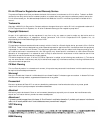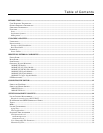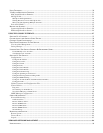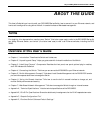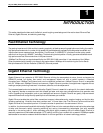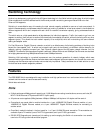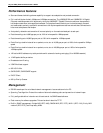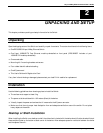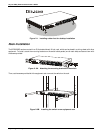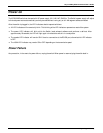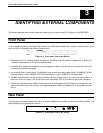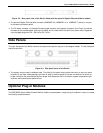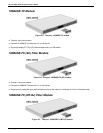
24-port NWay Ethernet Switch User’s Guide
2 Introduction
Switching Technology
Another key development pushing the limits of Ethernet technology is in the field of switching technology. A switch bridges
Ethernet packets at the MAC address level of the Ethernet protocol transmitting among connected Ethernet or fast
Ethernet LAN segments.
Switching is a cost-effective way of increasing the total network capacity available to users on a local area network. A
switch increases capacity and decreases network loading by making it possible for a local area network to be divided into
different segments which don’t compete with each other for network transmission capacity, giving a decreased load on
each.
The switch acts as a high-speed selective bridge between the individual segments. Traffic that needs to go from one
segment to another (from one port to another) is automatically forwarded by the switch, without interfering with any other
segments (ports). This allows the total network capacity to be multiplied, while still maintaining the same network
cabling and adapter cards.
For Fast Ethernet or Gigabit Ethernet networks, a switch is an effective way of eliminating problems of chaining hubs
beyond the “two-repeater limit.” A switch can be used to split parts of the network into different collision domains, for
example, making it possible to expand your Fast Ethernet network beyond the 205-meter network diameter limit for
100BASE-TX networks. Switches supporting both traditional 10Mbps Ethernet and 100Mbps Fast Ethernet are also ideal
for bridging between existing 10Mbps networks and new 100Mbps networks.
Switching LAN technology is a marked improvement over the previous generation of network bridges, which were
characterized by higher latencies. Routers have also been used to segment local area networks, but the cost of a router and
the setup and maintenance required make routers relatively impractical. Today’s switches are an ideal solution to most
kinds of local area network congestion problems.
Features
The DES-3225G Switch was designed for easy installation and high performance in an environment where traffic on the
network and the number of users increase continuously.
Switch features include:
Ports
♦ 24 high performance NWay ports all operating at 10/100 Mbps for connecting to end stations, servers, and hubs (22
MDI-X 10/100 Ethernet UTP ports and 2 MDI-II Uplink ports).
♦ All ports can auto-negotiate (NWay) between 10Mbps/ 100Mbps, half-duplex or full duplex and flow control.
♦ One optional rear panel slide-in module interface for a 1-port 1000BASE-SX Gigabit Ethernet module, a 1-port
1000BASE-LX Gigabit Ethernet module, or a 1-port 1000BASE-T Gigabit Ethernet module, for connecting to
another switch.
♦ One slide-in module interface in the front panel for 1 or 2 port 10/100M Ethernet connection. Three modules are
available: 2 ports TX module, 2 ports FX MT-RJ type module, and 1 port FX SC type module.
♦ RS-232 DCE Diagnostic port (console port) for setting up and managing the Switch via a connection to a console
terminal or PC using a terminal emulation program.




